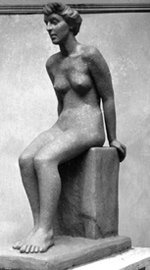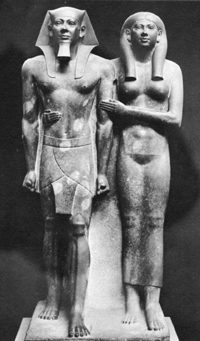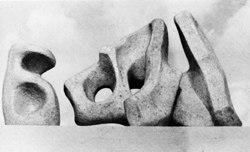Last year, I wrote a letter which was intended as a reply to several folk who had asked questions about an exhibition of my work held in the Pier Arts Centre, Stromness. Questions about my art and about island life.
Sometimes a considered response, written at leisure, is the best way to answer such queries.
Here is my letter. Perhaps, it may be of interest to today’s young art student or to others who wonder.
After art school days at Grays in Aberdeen I came back to North Ronaldsay – that was in 1962.
My parents were still in their prime and I had brothers and sisters who shared the work.
Since the island population was around 160, there were folk who could help and, conversely, there was time to help.
In many ways the island was still very much alive; it was an island where its folk had grown up together and lived together for most of their lives.
They also shared a common history stretching back through the generations. It was an island very different from today; agriculture has changed dramatically as has almost every aspect of life, but perhaps most serious of all, the population has fallen to around 60.
In those far off days I had the time to produce the artwork that I wanted. I could travel to further my artistic research and development and I could enjoy island life.
There was the fishing, the communal work involved with the tangles, native sheep and the hairst work, contact with the older generation with their knowledge and experience and so on.
Time seemed to be there for the taking. But time steals away the years; folk age, as earlier freedoms, once taken for granted, become less and less, other commitments appear and the years slip away all the more speedily.
Then, one day, before we are fully aware of what is happening, the reality of the passing years becomes apparent.
If I recall my art school days and make at least one comparison with today’s teaching, I think there is now more emphasis put on written work – at least that is my impression.
Too much theory can detract, I believe, from actually getting down to developing the art of sculpture, painting, or whatever discipline one specialises in (if one really wants to become a practising, creative artist).
Imagine, for example, learning how to be a farmer or a fisherman from a book! I’m not saying that the theory of art, with its historical background etc, should not be the subject of detailed study with a degree qualification at the end of the day; but there is a big difference between the purpose of this knowledge and the knowledge of a creative artist.
I always felt every year was important and that even four were too short. Two were a general course – anatomy, history of art and architecture, drawing, design, painting, sculpture, metalwork, jewellery, ceramics etc. Then, for two years, one specialised in one of the three main subjects – painting, design or sculpture.
It is at this stage that a fifth year would be so useful and, having had that advantage, I am convinced of it.
The studios, plus equipment and materials, all supplied virtually free, were a great thing to have during those early informative years.
It was an unrivalled opportunity to develop artistic abilities from day to day – something that one loses initially when the art school days are over.
In the sculpture department, where I finally settled, we learned to model in clay, cast in plaster-of-paris (portraits, lifesize pieces etc) and we did basic carving, mostly using sandstone or serpentine.
Also used, was a soft building material called siporex – enabling students to get the experience of carving quickly.
Letter cutting was taught, working in slate, marble or granite. Leo Clegg, head of the sculpture department at that time, said that a sculptor should be able to draw, model, carve, cast, cut letters etc – all the skills a sculptor should have.
In carving granite, marble, wood or whatever, the process is slow. As it happens, I prefer modelling/building up.
However, working in clay means one has to cast the final piece, a tedious process of making plaster moulds and creating a plaster (or other mediums) replica with all that entails – casting, laminating, joining, chipping out, finishing, colouring, polishing etc.
On the other hand, modelling directly in plaster (as I did for my recent exhibition) is much faster and one has the satisfaction of seeing a piece of work evolving quickly.
I think when modelling in clay one has more control – it’s slower but arguably gives a more considered creation.
If a portrait or a figurative piece (or an abstract sculpture for that matter) is not going well, then one can simply slice away the clay and begin again – not so easy for either set plaster and even more difficult with setting/set cement.
When working in plaster or cement all the additional procedures are eliminated, though one is restricted by a medium that sets quickly – 20 minutes or so for plaster.
And, if modelling in cement, cement does not tolerate interference – apart from anything else it could weaken the structure.
I should say that plaster-of-paris, by comparison, is easily worked with surf-forms or the like, even when hard and properly cured, but the disadvantage with a plaster piece is that it is fragile and so one is then looking at another cast with the replica in cement, bronze, or cold cast resin bronze, to name three possibilities.
As a sculptor, I believe the most difficult challenge is modelling, or carving a lifesize study of the human figure.
If one looks at an ear, eye, hand or foot, let alone the body, we are confronted with all sorts of shapes, changing angles, subtle planes and proportions.
Once life studies are mastered, then a sculptor (or painter) is well on the away. From that basis – just like learning to read and write – an artist can develop his or her ideas. The very same principle applies to all work which I believe is an art of one kind or another: building with stone; the carpenter or the knitter; the person who ploughs the fields or the fisherman and so on.
Each learns the basic skills and every person will have a different talent with a different approach and degree of accomplishment all their own.
Let me now mention my painting. I have always aimed at producing a picture that captures, in a way that most folk will understand, the atmosphere, colour and, if I may use the word, the essence of North Ronaldsay or of the Orcadian landscape.
Maybe as a sculptor, with my interest in three-dimensional form, I might dwell a little longer on eye-catching shapes where rock and stone feature.
I do not attempt to be entirely realistic, since a camera can manage that. Instead I paint quickly, mostly always on location in a free impressionistic style, concentrating on the overall interest of the scene, leaving out unnecessary detail.
A painting, if not completely finished, must convince me that it will be a success – the colour and composition has to be good.
Further development and finishing touches may be necessary and that will mostly be done later at home before the oil paint begins to harden. Watercolour, by comparison, is a more instant medium and has generally to be finished in one go.
Mostly, my art is a question of getting down to work. The difficulty sometimes is making that start.
When one does (taking painting as an example) there will be frustrating failures.
And even when one has got under way, not every day goes successfully. Mentally it is often hard to force oneself back to work after days of failures and particularly if there are deadlines to meet or other distracting work to do.
What else is there? Yes, my so-called abstract sculpture.
Some folk say: “No I don’t understand it.”
It’s very simple. Suppose someone, who was greatly taken with North Ronaldsay, wanted a painting to remind them of the island. That is easy. Paint a picture.
Suppose they asked for a sculpture. Well, I could model a portrait of someone or maybe a figure – a farmer, peat-carrier, fisherman etc. But what about something other than a human representation?
Something which reminds them of the sea, a bird in flight, such as the forever gliding fulmar, or the graceful tern; sea shells and rock formations; the streamlined dogfish or the wonderfully engineered pincers of the sea-urchin; or curious-shaped seaweed, stone and broken shells that one finds every other fishing day in the lobster creel or along the shore.
It’s possible to look at those many objects and create a piece of work which could be based on one, or which could combine two or three or more.
Would that not remind a person of a day fishing or a walk on the beach? That is what I sometimes do. And when I do, I remember the complicated human body – that essential alphabet of three-dimensional form and understanding.
I remember Egyptian sculpture with its monumental, simplified forms. I even remember days at sea — the artistry, if you like, of balancing in a small open boat against the moving waves with every fleeting view a work of art.
For, against each heaving mass of water, the boat and fisherman counter poise and shift to meet the rise and fall, imperceptibly following the rhythms of sea and sky.
And what about the rhythms of North Ronaldsay itself? I hadn’t thought about it like this before, but I was just thinking about what I have been saying – about the artistry in our day to day activities.
Perhaps, one could compare the island to a work of art. The island has sometimes been described as a jewel set in azure seas for example. How could the island be, so to speak, a sort of living work of art?
That would be interesting. Well, it would have to look good from all perspectives.
If there were bad areas, changes would be required, as in my piece of sculpture that was not coming along well.
To wipe everything away, as I sometimes do when a painting is not going satisfactorily, is perhaps too drastic – though often I find the best solution is a new beginning.
This piece of island art would have to be balanced – just like the fisherman and his boat at sea.
Not only that but it would have to meet the challenge of adverse weather as well. Could the island be looked at as it was in the past, when, arguably, as I said earlier, it was alive and island life could be enjoyed?
I believe it could. It would require a few touches of vibrant colour, such as young families.
More people would be around to help, just as we did in our early days. They would, most importantly, have to respect and carry on the best of the old traditions and customs, which cover almost every aspect of island life, and, at the same time, develop new opportunities.
Then, possibly, a frame could be placed round the picture, and North Ronaldsay could be displayed for all to see.
I am including four photographs of pieces of sculpture as an explanation of the above text. One is an art school life-study – that essential alphabet of three-dimensional form.
Another is of an Egyptian sculpture – powerful and monumental, and showing the simplification of form.
A third is my clay study for a lifeboat-man – showing something of that Egyptian concept.
There, for example, the folds of the clothing are reduced to uncomplicated forms, leaving the essential figure strong and complete.
The fourth shows one of my abstract sculptures based on natural forms but using the knowledge gained and developed from those examples.




